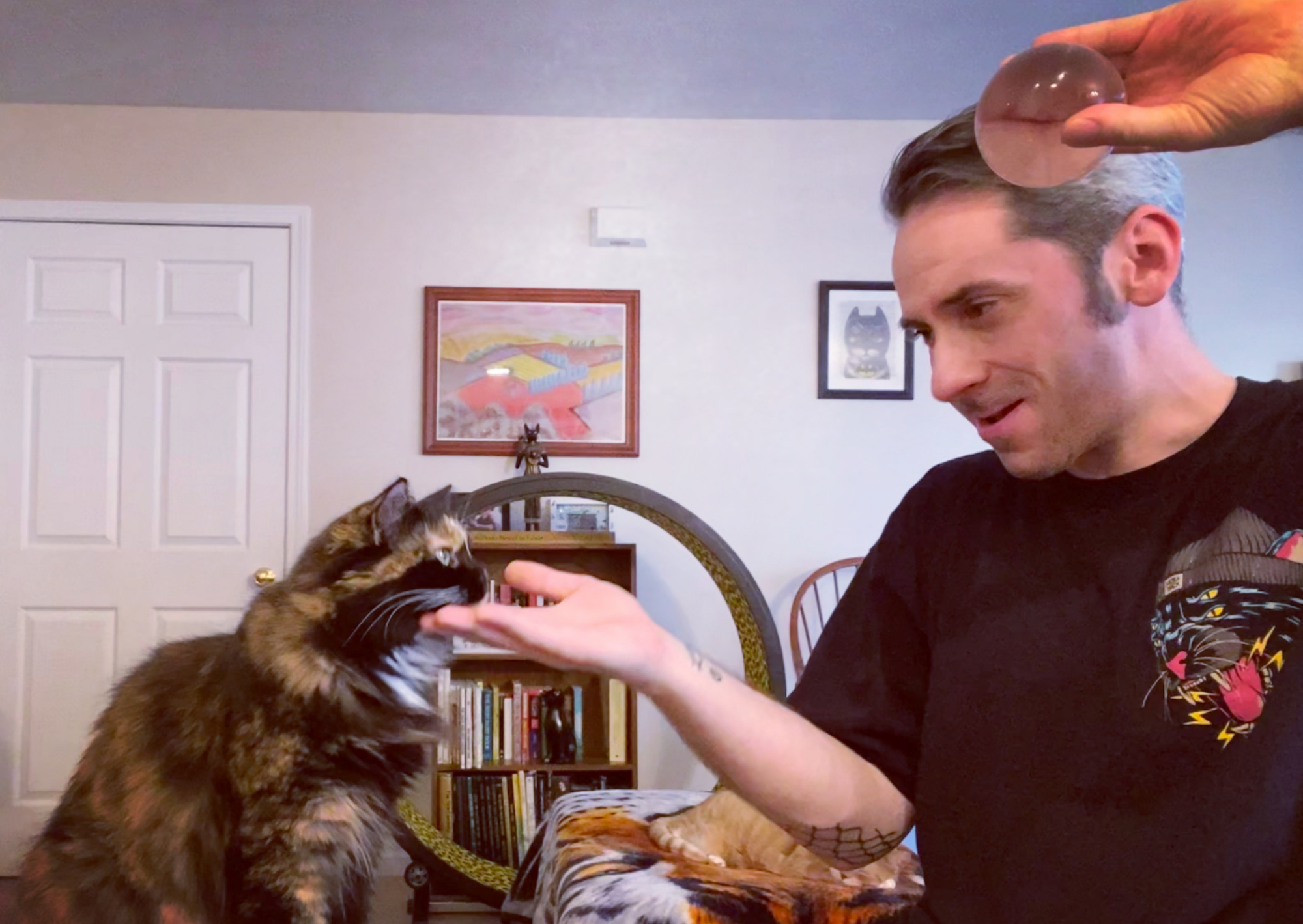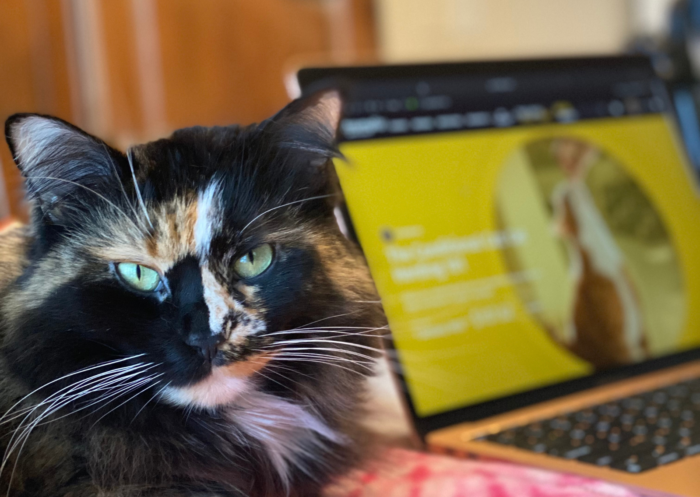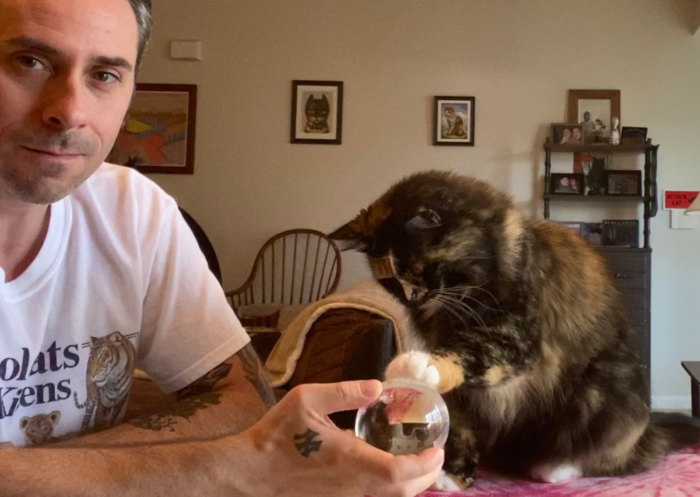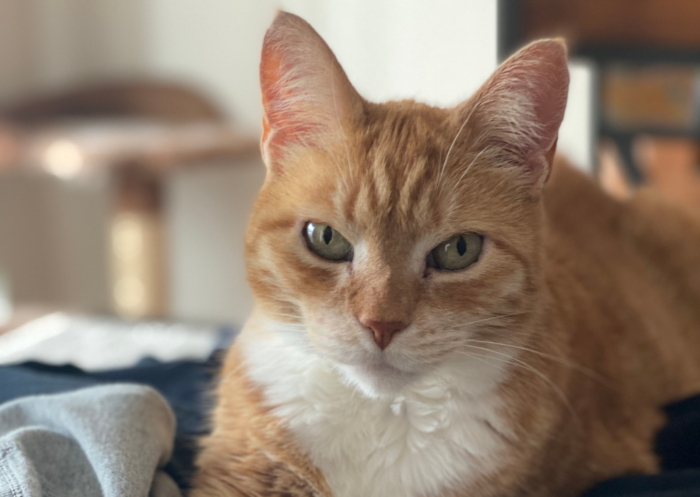Some fun and functional behaviors to train with your cat and why
Training a cat?! Why would you do that? To distill that question down to a few sentences, training through a positive reinforcement (R+)-based approach with cats enhances the overall relationship, builds trust, develops the ability of the cat in your life to demonstrate choice and control through accessing reinforcers voluntarily, while further offering your feline mental and sensorial enrichment. All the while creating new behaviors that can vary from a light-hearted high-five to sitting on a stationing mat for an essential medication injection.
One neat aspect is that the conceptual and theoretical underpinnings of how you are training or conditioning your cat (while at the same time being conditioned yourself) through R+ will be able to be applied to all the other species you encounter daily (along with being able to be applied by and to yourself). When working with cats there are two main response classes that we initially condition in one form or another. From those initial forms we can build a diverse variety of behavioral responses off. These two main classes will be referred to as foundational behaviors as any (if not all) of the other behaviors conditioned have aspects of or are formed off these two main behavior classes. The first class is that of targeting responses and the second that of stationing responses.
The first behavior that we encourage you to create with your cat using an R+ approach is a targeting response in the form of your cat contacting your hand or a finger with their nose or snoot. This behavior offers an initial fun and fascinating introduction into the reinforcing world of cat training and is functional in that it can build trust not only through your cat accessing a reinforcer through responding in a certain way, but also through the actual behavior of approaching and contacting you. This initial targeting behavior can also be used to increase the rate of times that your cat will approach and interact with you daily and can act as a sort of recall in times of unexpected danger or when it is necessary to secure your cat in a prompt manner. From this first targeting contact the behaviors that can built off such is only limited by creativity and physical capability.
The second behavior that we find to be the most practical and valuable is a stationing response in the form or topography of the cat in your life, remaining at a certain mat or fixed point in the training space and being able to demonstrate returning to this fixed point on cue or sight. This initial approximation in station training acts as a foundation that allows for a multitude of behaviors to constructed, from being able to have a fixed point to work to condition or increase states of calm or relaxation expressed behaviorally by your cat in settings like the veterinary office, to helping decrease the amount of time the cat in your life spends trying to lie on your computer keyboard, by increasing the amount of time they spend stationing on a mat next to that keyboard.
Once these foundations have been laid many behaviors can be shaped and constructed through the creative application of targeting and stationing. Such behavior can vary from a sit to having your cat jumping onto your shoulders, to your cat retrieving a toy or sitting pretty for a great photo op. These behaviors are fun and reinforcing for both you and your cat. They also offer enrichment while adding more behaviors to the current repertoire. But, there is also another class of training application that works to make the fun, functional and the performance of necessary husbandry or veterinary care both practical and consensual. This is what we refer to as cooperative care. Understanding how to plan for and apply aspects of cooperative care into the overall training in such instances can go far in offering more choice and control for your cat, keeping the bond of trust and relationship intact, along with the practical implication that the care needed is able to be attended to.
One last fun and functional element of cat training that can easily be incorporated into you and the cat in your life’s routine is that of pattern games. Pattern games were introduced by Leslie McDevitt to the canine world but are easily adapted to felines. These games can be thought of to allow your cat a set framework of interacting in an unpredictable environment in a predictable way of accessing reinforcers contingent upon expressing a certain behavior pattern. This behavior pattern offers the cat in your life a high degree of repetition and reliability in structure and to reinforcer access, along with allowing them at the same time being able to either explore or remove themselves in proximity to certain stimuli occurring in that unpredictable environment amongst a predictable framework of engagement and habituation, into which is neatly tucked the cue-response-reinforcer contingency. Pattern games can be applied with much success to situations such as veterinary office visits, durng a certain phase of introductory processes with various species and in offering enrichment, engagement and enhanced socialization for cats who may not have had access to human contact during those early formative weeks of essential feline socialization.
The course, The Conditional Cat: Cat Herding 101, will cover all of these areas in depth and detail, becoming an easygoing companion that will offer 6 weeks (and beyond) of everything from how to get started utilizing a positive reinforcement-based approach with your cat and the science behind the concepts, to initially targeting and stationing and once those foundations are in place moving onto everything from intermediate behaviors, like sit down and high-five to cooperative care approaches including carrier training and constructing a chin-hold. Along the way we will review the parameters of distance, distraction and duration and how they can be incorporated to strengthen and generalize behavioral responses, while also taking time to delve into conditioning calm and relaxation for your cat, covering pattern games for felines along with much more! *CLICK HERE TO CHECK IT OUT!*
Make your cat’s dream come true by starting your marvelous journey into cat training; sign up today!
See also other posts:
June 30, 2023

Get Your Lost Dog Back Home Quickly: Follow These 12 Tips for Success
Vacations favor more frequent and longer walks with our furry friends. We travel, visit new places. Summer makes us loosen our brakes and allow our…
June 30, 2023

Managing Aggressive Dog Behavior: Tips for Peaceful Living
Living with an aggressive dog may seem challenging, but it can be peaceful and manageable with the right approach. One key aspect is to remain…
June 30, 2023

Unlocking the Secret to Successful Puppy Socialization: Quality over Quantity
Today, although the topic is very important, I will keep it brief. Socialization is a topic that could fill books or scientific papers. However, today…




